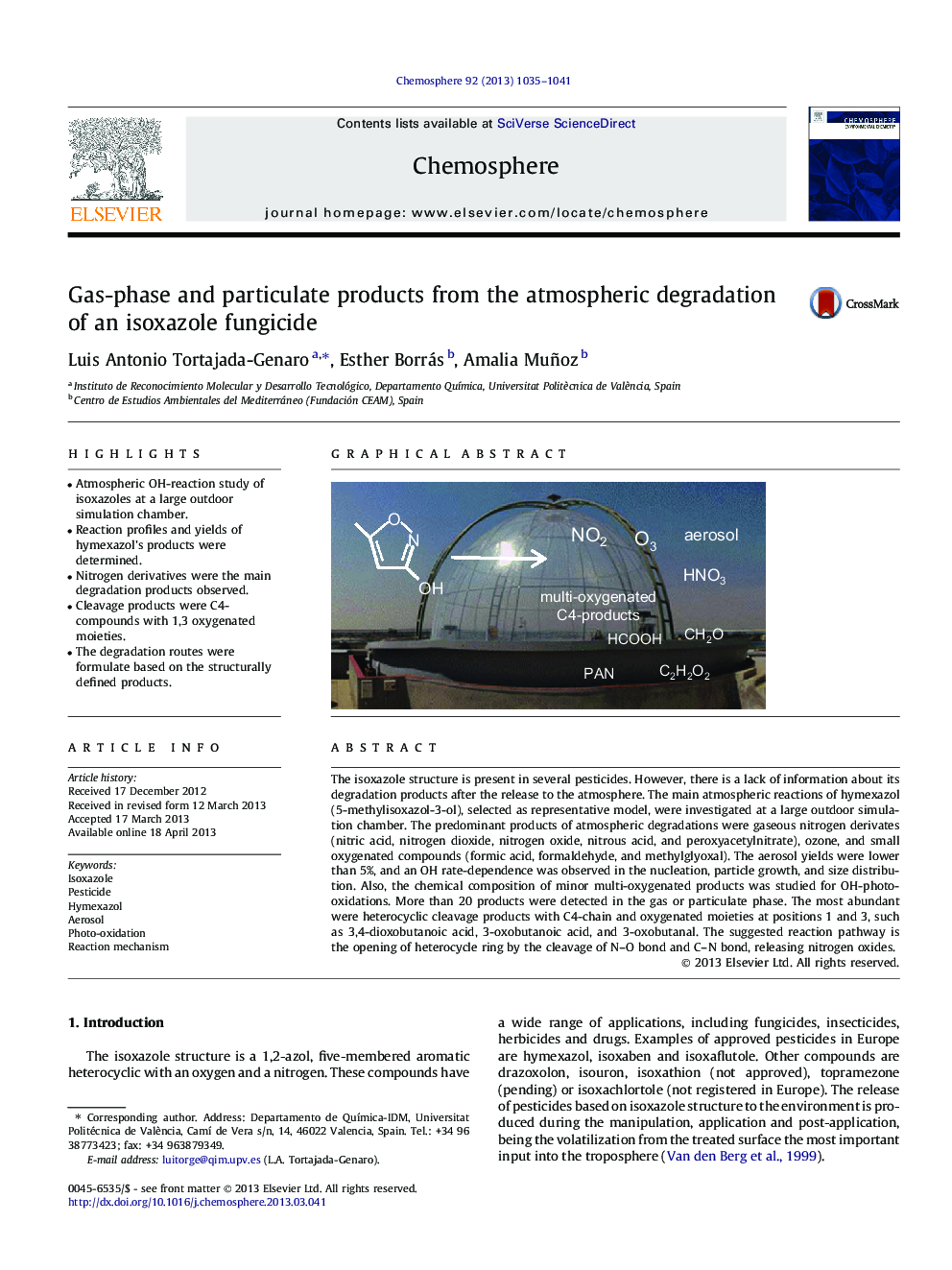| کد مقاله | کد نشریه | سال انتشار | مقاله انگلیسی | نسخه تمام متن |
|---|---|---|---|---|
| 6310035 | 1307459 | 2013 | 7 صفحه PDF | دانلود رایگان |
- Atmospheric OH-reaction study of isoxazoles at a large outdoor simulation chamber.
- Reaction profiles and yields of hymexazol's products were determined.
- Nitrogen derivatives were the main degradation products observed.
- Cleavage products were C4-compounds with 1,3 oxygenated moieties.
- The degradation routes were formulate based on the structurally defined products.
The isoxazole structure is present in several pesticides. However, there is a lack of information about its degradation products after the release to the atmosphere. The main atmospheric reactions of hymexazol (5-methylisoxazol-3-ol), selected as representative model, were investigated at a large outdoor simulation chamber. The predominant products of atmospheric degradations were gaseous nitrogen derivates (nitric acid, nitrogen dioxide, nitrogen oxide, nitrous acid, and peroxyacetylnitrate), ozone, and small oxygenated compounds (formic acid, formaldehyde, and methylglyoxal). The aerosol yields were lower than 5%, and an OH rate-dependence was observed in the nucleation, particle growth, and size distribution. Also, the chemical composition of minor multi-oxygenated products was studied for OH-photo-oxidations. More than 20 products were detected in the gas or particulate phase. The most abundant were heterocyclic cleavage products with C4-chain and oxygenated moieties at positions 1 and 3, such as 3,4-dioxobutanoic acid, 3-oxobutanoic acid, and 3-oxobutanal. The suggested reaction pathway is the opening of heterocycle ring by the cleavage of N-O bond and C-N bond, releasing nitrogen oxides.
Journal: Chemosphere - Volume 92, Issue 8, August 2013, Pages 1035-1041
